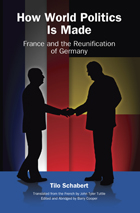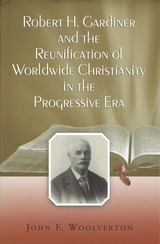2 books about Reunification

How World Politics Is Made
France and the Reunification of Germany
Tilo Schabert
University of Missouri Press, 2009
With the collapse of the Soviet Union and its Eastern European bloc, the reunification of Germany was a major episode in the history of modern Europe—and one widely held to have been opposed by that country’s centuries-old enemy, France. But while it has been previously believed that French President François Mitterrand played a negative role in events leading up to reunification, Tilo Schabert shows that Mitterrand’s main concern was not the potential threat of an old nemesis but rather that a reunified Germany be firmly anchored in a unified Europe.
Widely acclaimed in Europe and now available in English for the first time, How World Politics Is Made blends primary research and interviews with key actors in France and Germany to take readers behind the scenes of world governments as a new Europe was formed. Schabert had unprecedented, exclusive access to French presidential archives and here focuses on French diplomacy not only to dispel the notion that Mitterrand was reluctant to accept reunification but also to show how successful he was in bringing it about.
Although accounts of U.S. officials regarding the reunification of Germany boast of American leadership that guided European affairs, Schabert offers a Continental perspective that is far more complex. He reveals the constructive role played by France as he re-creates not only French cabinet meetings but also communications between Mitterrand and George H. W. Bush, Mikhail Gorbachev, Helmut Kohl, Margaret Thatcher, and other world leaders. Along the way, he provides new insight into such major episodes as the fall of the Berlin Wall, European Council summits, the German-Polish border dispute, Germany’s membership in NATO, and the final settlement of reunification.
Schabert’s work is a major piece of scholarship that clearly shows the decisive role that France played in the orchestration of German reunification—by making the “German question” a European question. A primary source in its own right, this book dramatically reshapes our understanding of not only reunification but also the end of the Cold War and the construction of a New Europe.
[more]

Robert H. Gardiner and the Reunification of Worldwide Christianity in the Progressive Era
John F. Woolverton
University of Missouri Press, 2005
In his time, Robert Hallowell Gardiner III (1855–1924) was the heart and soul of the Progressive Era’s movement to establish cooperation among all Christian churches. Gardiner’s legacy today is the World Council of Churches. From his home on the Kennebec River and from the Maine town that bears his family’s name, Gardiner carried on an extensive letter-writing campaign on behalf of the reunion of worldwide Christianity. John F. Woolverton incorporates Gardiner’s eleven thousand letters, as well as his published speeches and articles and family records, to present the first biography of a man who was a seminal figure in the early twentieth-century Christian ecumenical movement.
Gardiner was remarkable in that, as a layperson in the traditionally clergy-dominated, hierarchical Episcopal Church, he was able to bring along his own often reluctant denomination, as well as the Eastern and Russian Orthodox churches, major American and European Protestant bodies, and for a time the Roman Catholic Church itself. In addition, in the 1890s Gardiner was a leader in Boston’s famous Social Gospel, moving on to the Young Manhood Movement of the 1910s. He was an outspoken advocate for giving women a voice and vote in the church, as well as a leader in the major 1916 revision of Christian education in his denomination.
In his study, Woolverton analyzes Gardiner’s commitment as an internationalist to multilateral peace efforts on the threshold of World War I. He also discusses Gardiner’s relationships with well-known figures from that era: U.S. Senator George Wharton Pepper, Francis Stetson, John R. Mott, Newman Smyth, Mary Kingsbury Simkhovitch, John J. Wynne, Cardinal James Gibbons, Episcopal Bishop Charles Henry Brent, and Vida D. Scudder.
Woolverton shows how, despite the ravages of war, Gardiner was able to build a vast network of cooperating political and religious leaders. American historians of the Progressive Era, church historians, and theological students will welcome this valuable addition to the historical literature on the social gospel.
[more]
READERS
Browse our collection.
PUBLISHERS
See BiblioVault's publisher services.
STUDENT SERVICES
Files for college accessibility offices.
UChicago Accessibility Resources
home | accessibility | search | about | contact us
BiblioVault ® 2001 - 2024
The University of Chicago Press









